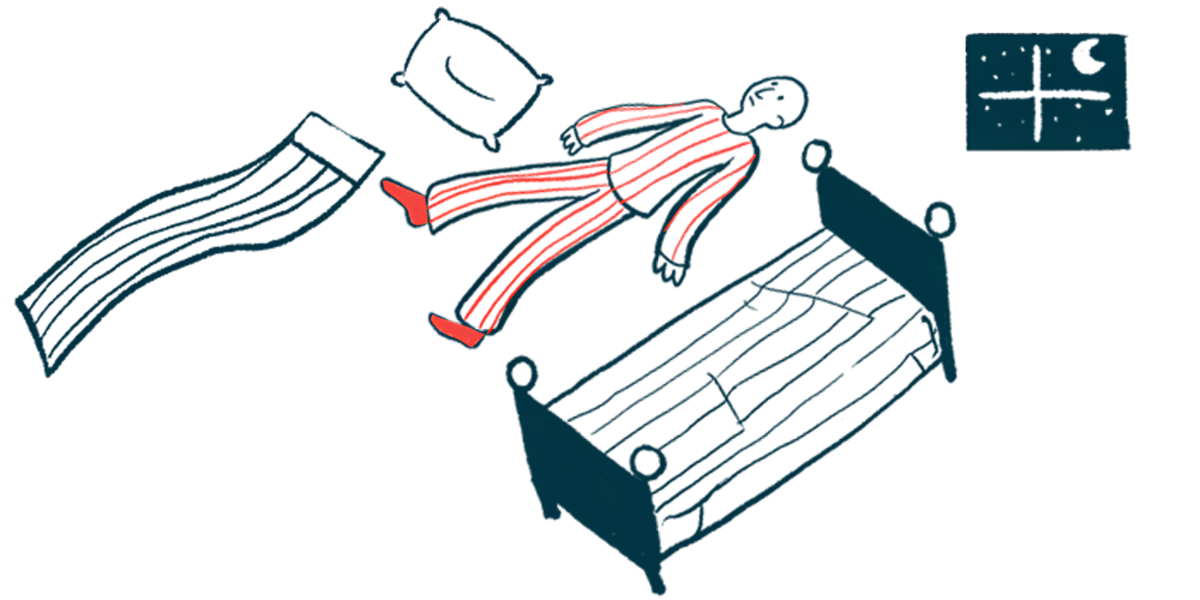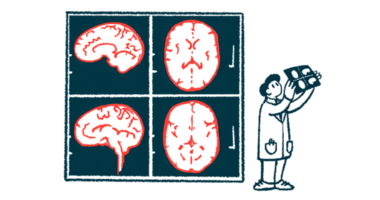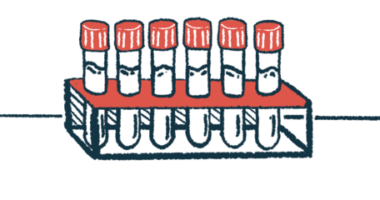Imaging can predict Parkinson’s from REM sleep behavior disorder
Biomarkers may help ID disease likelihood vs. dementia with Lewy bodies

An international team of scientists has identified imaging biomarkers that can predict which people with REM sleep behavior disorder (RBD) will develop Parkinson’s disease, or who might progress to dementia with Lewy bodies (DLB).
Most individuals with RBD — a sleep disorder in which people unknowingly act out their dreams, both physically and vocally — go on to develop one of these two neurodegenerative diseases. To date, however, researchers haven’t known how to predict which disease it would be.
In two newly published studies, the scientists found that problems with a waste clearance system in the brain predict the development of Parkinson’s, while water content in a specific brain region predicts DLB.
“We already knew that isolated REM sleep behaviour disorder is a warning sign for these diseases. … What we didn’t know was who would develop what,” Shady Rahayel, PhD, a professor at the University of Montreal and the senior author of the studies, said in a university news story.
“Thanks to these complementary studies, we now have tools to better predict and personalize care,” said Rahayel, a neuropsychologist who also serves as a researcher at the Sacré-Cœur Hospital in Montreal.
Parkinson’s and DLB are progressive diseases characterized by the accumulation of abnormal protein clumps, called Lewy bodies, in the brain. The main distinction is that Parkinson’s is diagnosed based on its hallmark motor symptoms, with cognitive issues sometimes coming later, while in DLB, cognitive symptoms are usually evident before motor problems.
RBD is a major prodromal symptom of both diseases, meaning it is a subtle manifestation that can appear years before the standard symptoms that lead to a clinical diagnosis.
For most people, the body naturally paralyzes muscle movements during the REM stage of sleep, when dreaming usually occurs. But this paralysis is absent in people with RBD, leading them to act out their dreams.
About 9 in 10 people with RBD go on to develop Parkinson’s or DLB
According to the researchers, approximately 90% of people with RBD will eventually develop Parkinson’s or DLB.
“It’s not just restless sleep — it’s a neurological warning sign,” Rahayel said.
However, it’s been a challenge for clinicians to predict exactly which neurodegenerative disease may occur in a person with RBD. In these new studies, the scientists identified distinct imaging biomarkers on scans using advanced MRI techniques that may help make that distinction.
It’s not just restless sleep — it’s a neurological warning sign.
The first study, “Association of DTI-ALPS Glymphatic Index With Differential Phenoconversion in Isolated REM Sleep Behavior Disorder,” was published in the journal Neurology. In their work, the scientists explored changes in the body’s glymphatic system as a possible biomarker.
The glymphatic system is the brain’s waste clearance system, which uses circulating fluid to collect and drain waste. It is most active during sleep. Its dysfunction has been associated with the harmful accumulation of proteins seen in Parkinson’s and DLB.
Using an advanced MRI technique called DTI-ALPS, the team evaluated glymphatic function in the brains of 250 people with RBD and 178 without the condition. DTI-ALPS quantifies fluid movement to estimate how efficiently the glymphatic system is clearing waste.
People with a lower DTI-ALPS index — indicative of lower glymphatic function — on the left side of the brain were 2.4 times more likely to convert from RBD to Parkinson’s disease over a six-year follow-up period, the results showed.
According to Violette Ayral, a University of Montreal PhD student and the study’s first author, “this asymmetry mirrors what we see clinically in early Parkinson’s, where motor symptoms often start on one side of the body.”
“It may mark the very earliest stage of the disease,” Ayral said.
Importantly, per the researchers, an association between glymphatic function and DLB was not seen, suggesting that glymphatic dysfunction is a specific predictor of RBD conversion to Parkinson’s.
Personalized screening tests can predict which disease may develop
The second study, “Free water predicts dementia with Lewy bodies in isolated REM sleep behavior disorder,” was published in the journal Alzheimer’s & Dementia.
In this research, the team used advanced MRI techniques to quantify the freely flowing water content in a brain region called the nucleus basalis of Meynert. This region is involved in cognition.
Free water elevations in this brain region — believed to reflect early neuroinflammation and neurodegeneration — have been associated with Parkinson’s and DLB.
Over a median follow-up of more than eight years, the team found that among people with RBD, those with higher free water content in the nucleus basalis of Meynert were eight times more likely to convert to DLB than people with lower levels.
No such relationship was observed between free water content and Parkinson’s development, suggesting no greater likelihood of developing this condition.
The scientists believe these findings pave the way for personalized screening tests that can predict which neurodegenerative disease will develop in a person with RBD. Such testing would allow clinicians to monitor individuals experiencing REM sleep behavior disorder more carefully and address either neurodegenerative disease in the early stages before irreversible damage sets in.
“Altogether, these results support the idea that combining MRI-based differential markers … may allow for more specific prediction of disease trajectories, potentially improving patient stratification in clinical trials and prognosis in neurodegenerative diseases,” the researchers in the first paper wrote.








